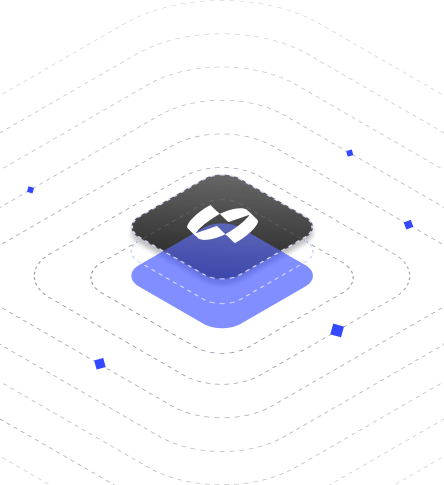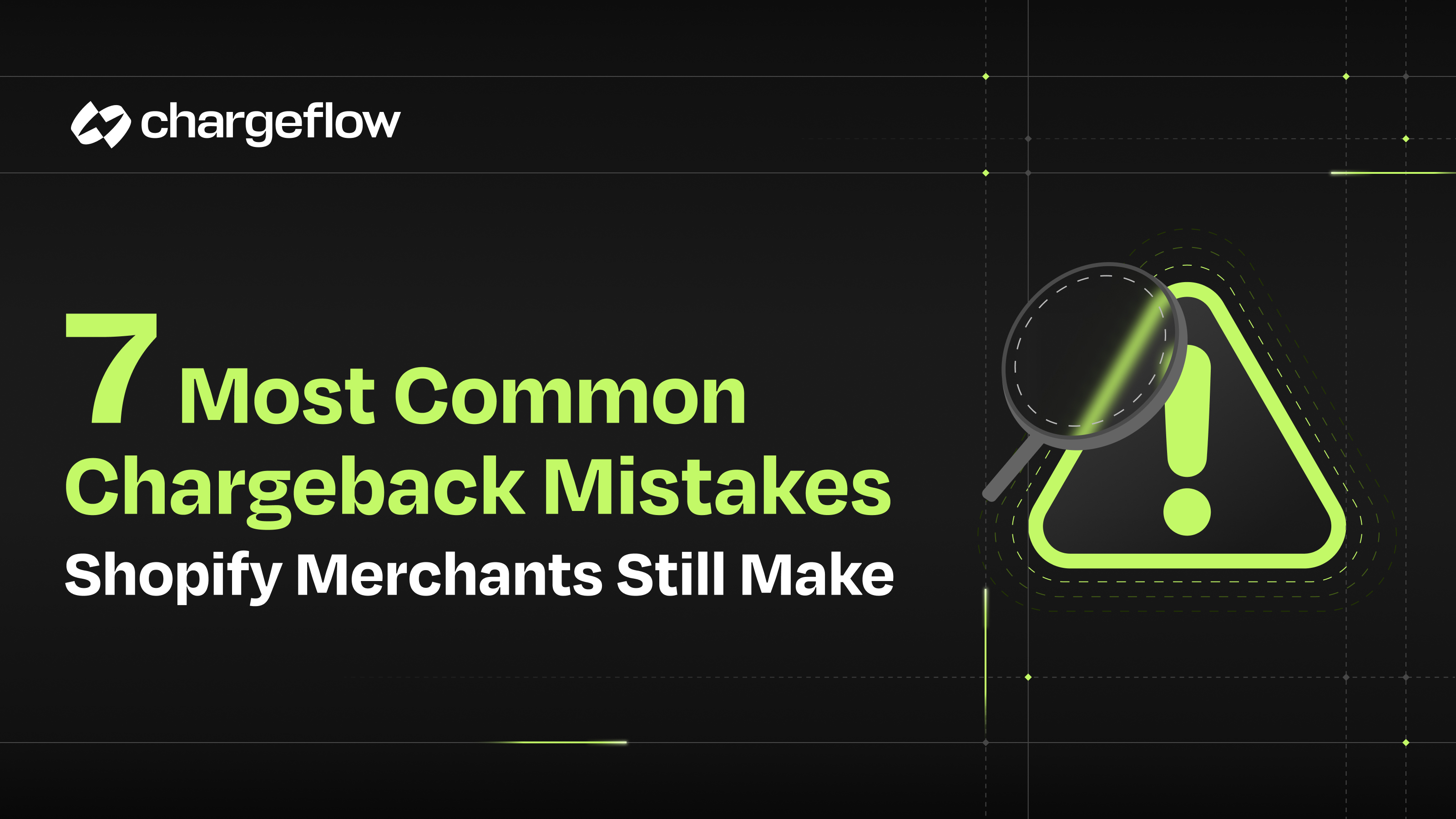How to Use Data to Minimize Returns and Chargebacks

Chargebacks?
No longer your problem.
Recover 4x more chargebacks and prevent up to 90% of incoming ones, powered by AI and a global network of 15,000 merchants.
You can maximize profits and improve your reputation by analyzing your store’s data and implementing data-driven strategies. Learn more from this piece.
Returns and chargebacks are a significant pain point, leading to lost revenue, increased costs, and dissatisfied customers. In fact, according to the National Retail Federation, US retailers lost $816 billion to returns in 2022.
The good news is that there are steps you can take to minimize returns and chargebacks. You can maximize profits and improve your reputation by analyzing your store’s data and implementing data-driven strategies.
Yet, more than knowing you can implement a data-driven system to manage chargebacks and returns is required. The ultimate game-changer is understanding what to track, how to analyze your data, and how to excavate valuable insights for effective dispute remediation.
Keep reading for exclusive insights that'll improve your bottom-line profit and save your team’s time from manually dealing with chargebacks.
Understanding the Impact of Returns and Chargebacks
Returns and chargebacks can significantly impact your eCommerce business in many ways, such as:
1. Financial Implications
Returns and chargebacks can pack a severe financial punch. Returns can devour your profits and incur additional shipping and restocking costs. Chargebacks, on the other hand, can result in lost revenue and fines. And in extreme cases, they can lead to the loss of processing rights.
2. Customer Satisfaction and Reputation
Beyond the financial aspect, there's the matter of customer satisfaction. Customers who don’t have a good experience with returns or chargebacks are less likely to do business with your store again.
In fact, 84% of customers say they’ll stop shopping at an online store after a negative return experience.

A Closer Look at Returns and Chargebacks
The fundamental first step to minimizing returns and chargebacks is to understand the root causes of the problem. By analyzing your data for return trends, you can identify specific products that are being returned most often and why customers are returning them.
- The Root of the Problem
Generally speaking, returns often result from product quality, inaccurate descriptions, sizing issues, and more. Chargebacks, on the other hand, typically result from fraud, disputes, or unclear policies. Identifying these root causes is your first step toward resolution.
Track your data to identify the reasons customers return products or initiate chargebacks. You can use this information to develop strategies to address the root causes of the problem.
- The Data Advantage
Here's where data comes to the rescue. It provides a clear picture of what's happening behind the scenes. By analyzing your eCommerce data, you can uncover patterns and trends. Are certain products frequently returned? Do chargebacks peak during specific times of the year?
Data is your magnifying glass in this case, helping you pinpoint the source of problems accurately so you can take targeted actions to address them.

Analyzing Data for Return Trends
With your data-driven compass in hand, it's time to navigate the sea of returns and chargebacks.
Where to start? Delve into your historical data. Track and analyze returns over time and look for spikes and dips. What do they correlate with? Understanding the past can help you prepare for the future.
Essential Metrics to Monitor
Some metrics to consider include:
- Return rates - Calculate the return rate for your store. Look for trends and spikes in your return rate and see how they relate to changes in your business.
- Common return reasons - Dive into why customers return products. Is it quality, fit, or something else? In addition, what are the recurring reasons for chargebacks?
- Product performance - How do your products perform over time? Is there a trend in certain products failing?
Implementing Data-Driven Strategies
Having collected your data, use it wisely. Analyzing data is only part of the solution; implementing it is the next step. Reduce your returns and chargebacks through informed decisions based on data-driven insights.
Reducing Returns:
Reduce return rates by giving customers all the necessary information and setting clear expectations.
- Optimize product descriptions and images - Identify where you can create more accurate and detailed product descriptions and photos, reducing the likelihood of disappointment upon delivery.
- Implement product quality control - If data reveals consistent quality issues, consider tightening your quality control measures.
- Provide personalized customer support - Use data to tailor your customer support responses and returns process, addressing common concerns proactively.
Preventing Chargebacks:
Reduce the number of chargebacks by taking proactive steps to prevent disputes and fraud.
- Take proactive fraud prevention measures: Data can help you spot unusual purchase patterns or transactions, flagging potential fraud.
- Create clear refund policies: Based on common chargeback reasons, ensure your refund policies are crystal clear and aligned with chargeback prevention.
- Ensure efficient dispute resolution: Use data-guided practices to streamline dispute resolution processes, reducing the likelihood of chargebacks.
Automating Returns and Chargeback Management
In addition to having a solid data-driven strategy in place, it's essential to automate the execution of your returns and use chargeback alerts to pre-empt losses. Automation can help you streamline your processes, improve efficiency, reduce errors, and save time and money.
Automation can simplify and speed up your returns and chargeback management processes. By automating tasks such as return authorization, tracking, and refund processing, you can free up your team to focus on other tasks.

Notable Benefits of Automation
Some of the benefits of automation include:
- Increased efficiency: Automation can help you process returns and resolve chargebacks more quickly and efficiently, improving customer satisfaction and reducing costs.
- Reduced errors: Human errors can lead to increased chargebacks. Automation can minimize these risks by ensuring tasks are completed accurately and consistently.
- Improved customer satisfaction: Customers appreciate it when returns and chargebacks are processed quickly and efficiently. Automation can help you meet their expectations and improve their satisfaction with your business.
Available Tools and Technologies
Now that you understand the importance of automation, it's crucial to know the tools and technologies that can make it happen. Here are two prominent options:
Returns Automation:
ReturnGO is an innovative returns management platform that helps eCommerce businesses automate return and exchange processes. It offers a variety of features, including:
- Automated return authorization - Automatically authorize returns based on your return policy. This saves you time and ensures that returns are processed quickly and efficiently.
- Self-service return portal - Offer an online return portal to make it convenient for customers to request returns and exchanges for eligible products.
- Detailed return analytics - Analyze your return data to identify trends and gain actionable insights that can help you optimize your returns process.
ReturnGO offers other vital features like pre-paid return labels, automated notifications, and integrations with popular eCommerce services like shipping carriers, helpdesks, and email marketing platforms.
Chargeback Management Automation:
Chargeflow is a powerful chargeback management platform that helps eCommerce businesses recover chargebacks on autopilot. It offers a variety of features, including:
- Automated chargeback response - Automate the chargeback resolution process to save time and ensure efficient and quick chargeback remediation.
- Chargeback tracking - Track disputes before they become chargebacks and stay on top of ongoing cases with data from over 50 customer touchpoints.
- Chargeback analytics - View detailed analytics on your chargeback data so you can identify trends and areas for improvement.
Chargeflow offers several other features, such as custom chargeback templates, chargeback dispute management, and integration with various eCommerce platforms.
ReturnGO and Chargeflow are just two examples of the many tools and technologies available to help you automate your post-purchase processes.
Conclusion
In today's eCommerce world, data is your trusted companion on the journey to minimize returns and chargebacks.
With data-driven insights and strategies, you can protect your profits, boost customer satisfaction, and strengthen your brand's reputation. Don't wait - start leveraging data today and watch your eCommerce company thrive.
About the Author: Rebecca Fox is the Content Marketing Manager at ReturnGO. She is passionate about creating helpful and effective content for eCommerce business owners who want to streamline their returns and exchanges process.

Chargebacks?
No longer your problem.
Recover 4x more chargebacks and prevent up to 90% of incoming ones, powered by AI and a global network of 15,000 merchants.






























.png)








